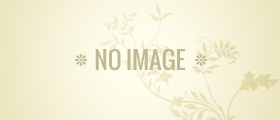Breast cancer, typically regarded as a women’s health condition, can strike men too. In fact, though men are about 100 times less likely to get breast cancer than women, about 1 percent of all breast cancers occur in men.

Estimated 2,190 men will be diagnosed with breast cancer this year. |
An estimated over 2,190 men will be diagnosed with breast cancer this year, according to the American Cancer Society, and 410 will die from the disease. Overall a contrasting picture of approximately 10% increased number of men diagnosed since 2008 yet a 9% decrease in deaths with aggregated 19% deviated improvement in death rate which one might see attests to both early diagnoses and healthier diet treatments.
No one is really sure what causes cancer of male breast tissue, but researchers believe genetic factors and possibly receiving radiation exposure to the chest, such as during childhood radiation therapy, may be involved.
Signs and Risk Factors to Watch Out For
As with female breast cancer, the most common sign of breast cancer in men is a lump or thickening of the breast tissue. You may also notice:
- Dimpling or puckering in your skin
- A change in nipple shape (such as indentation)
- Scaling or redness of your nipple or breast skin
- Nipple discharge
Male breast cancer carries with it similar lifestyle risks as do all forms of cancer. Specifically, a poor diet, smoking, or drinking excessively all increase your risk. Other risk factors specifically for male breast cancer include:
- Age: Men between the ages of 60 and 70 are most at risk
- Family history
- Radiation treatments as a child or young adult
- Klinefelter’s syndrome, which results from an abnormality of the sex chromosomes
- Exposure to estrogen, such as by taking estrogen-related drugs or hormone therapy
- Liver disease: This increases estrogen activity in your body
- Obesity

Most often, men get breast cancer between the ages of 60 and 70 |
Perhaps because male breast cancer is so uncommon, men are much more likely to have delayed diagnosis, and treatment, than are women. In fact, a study that came out this year found that one-third of the men studied had advanced breast cancer by the time they were seen by a doctor. In women, meanwhile, fewer than 10 percent have advanced cancer when they first visit a doctor.
Can Male Breast Cancer be Prevented?
For now, the best route to prevent male breast cancer is similar to how you would reduce your risk of any cancer: with lifestyle changes. Among the best are:
- Lose Weight: Obesity is a risk factor for many types of cancer.
- Quit Smoking: This is the major cause of cancer.
- Limit Alcohol Consumption: Drinking alcohol in excess increases your risk of various cancers.
- Eat More Fruits and Vegetables: They’re loaded with cancer-fighting nutrients, such as phytoestrogens.
- Limit Intake of Processed Meats and Trans Fats: Processed meats, like lunchmeats, hot dogs, bacon and sausages, have been linked to prostate and other cancers.
- Exercise regularly. Exercise will reduce your risk of just about every type of cancer.
- Avoid exposure to environmental chemicals, radiation and air pollution. As air pollution inside the home is one of the fastest-growing causes of disease, leading health organizations now strongly recommend you use a high-quality air purifier in your home.
- Get the proper amount of vitamin D3. Maintaining healthy vitamin D3 levels is known to protect against cancer, according to the Vitamin D Council. Experts say 15-20 minutes of sunlight a day is an ideal amount for a light-skinned person to produce the right amount of vitamin D3.
Sources
MayoClinic.com Male Breast Cancer
MedLine Plus: Male Breast Cancer












